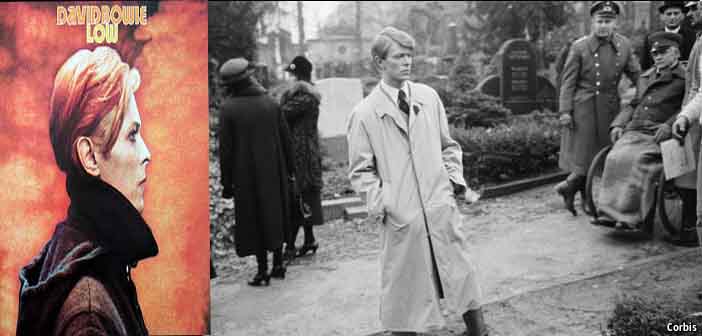
The producer told the tale, which also involves Iggy Pop, on BBC Radio 6 Music (January 7), Visconti explained that ‘Weeping Wall’ was written “because we lived in a war-torn city” while recording.
“Berlin was divided in four parts and the saddest part was the eastern part,” he recalled. “Occasionally we would venture across Checkpoint Charlie and go into East Berlin in the daytime and have a dinner and just walk around. We were allowed to do that. We were watched very carefully.
“Seeing the faces on these desperate people I think inspired David to write ‘Weeping Wall’, because on the other side of the Berlin Wall, those people were crying.”
“When the mix of ‘Weeping Wall’ was finished, I think in the control room we had myself, Iggy, Edu and his wife Barbara,” he recalled. “David said: ‘I want all of you to take a piece of paper and a pencil, and we’re going to listen to ‘Weeping Wall’ and I want you to draw a picture of what you think the song is about’.
“So we played ‘Weeping Wall’ through and all of us got to work scribbling. I didn’t look at anyone else’s scribbles and no-one looked at mine, and David seemed to be very bemused by this. When it was over, he said ‘OK, turn the papers over’, and we all had almost identical drawings – this was really weird. All of us had a jagged edged wall, like the edges of a woodcutting saw. It wasn’t a wall with flat tops, it was a wall with jagged tops – this is very important. Some of us put a moon over the jagged teeth and some of us put a sun over it like a circle – but almost unanimously we drew the same picture.”
Visconti continued: “David turned his [drawing] over and it was a picture of a lizard, like an alligator, with his mouth open, eating the sun – an orb – and it was all goosebumps from that moment on.
“I think even David was surprised, but he was hoping that would happen. I think in that smile he found that he might have some special mental powers that instigated it – this so-called ‘coincidence’.”
The result was a strange and beautiful LP that terrified RCA Records, which saw it as commercial suicide compared to Bowie's recent hits. It was indeed close to Bowie's imagined "new musical language," a record that helped revolutionize the sound of rock. (Ultimateclassicrock)
His previous two albums — 1975’s Young Americans and, especially, the following year’s Station to Station — were recorded under a heavy influence of drugs. The Thin White Duke period of Bowie’s career had literally and physically taken over his life, with his slim, gaunt appearance the result of the copious amounts of cocaine he was inhaling at the time.
Bowie, whose mental and financial conditions were no better off, realized he was headed for a major crash, and made a life-altering decision to get clean. So, along with pal Iggy Pop, he moved from Los Angeles to Switzerland, and then to Berlin in late 1976, to kick his bad habits. The new location not only straightened him out, it also reinvigorated him creatively.
Soaking in the sounds of German electronic bands like Kraftwerk and Neu!, Bowie — along with Pop, producer Tony Visconti and former Roxy Music keyboardist and ambient-music enthusiast Brian Eno — began to work on material that would shape and define one of the most fertile and exciting chapters of an ever-shifting musical career. (Pop’s solo debut, The Idiot, which Bowie produced, was conceived at this time too.)
Low marked the start of Bowie’s Berlin Trilogy when it was released on Jan. 14, 1977. “Heroes” would follow in October, with Lodger completing the collaborations between Bowie and Visconti, who co-produced the albums, and Eno, who co-wrote songs and played synths with Bowie and was the period’s spiritual architect, in 1979. Even though some of Low‘s tracks were recorded in West Berlin, much of the album was made near Paris. “Heroes” was recorded entirely in Berlin, however, and Lodger was put together in Montreux, Switzerland, and New York City.
But the inspiration and influence were clearly from Berlin. The electronic avant-pop and art-rock found on Low weren’t a huge shift for Bowie; Station to Station tinkered in a somewhat similar environment. But the album’s thematic foundation was risky. Side One was made up of seven songs — some fragments, some even less finished — filtered though a sense of pop minimalism. The best of them — “Sound and Vision,” “Be My Wife” — were Bowie gliding into another phase of a career that rarely stayed in one place for too long.
